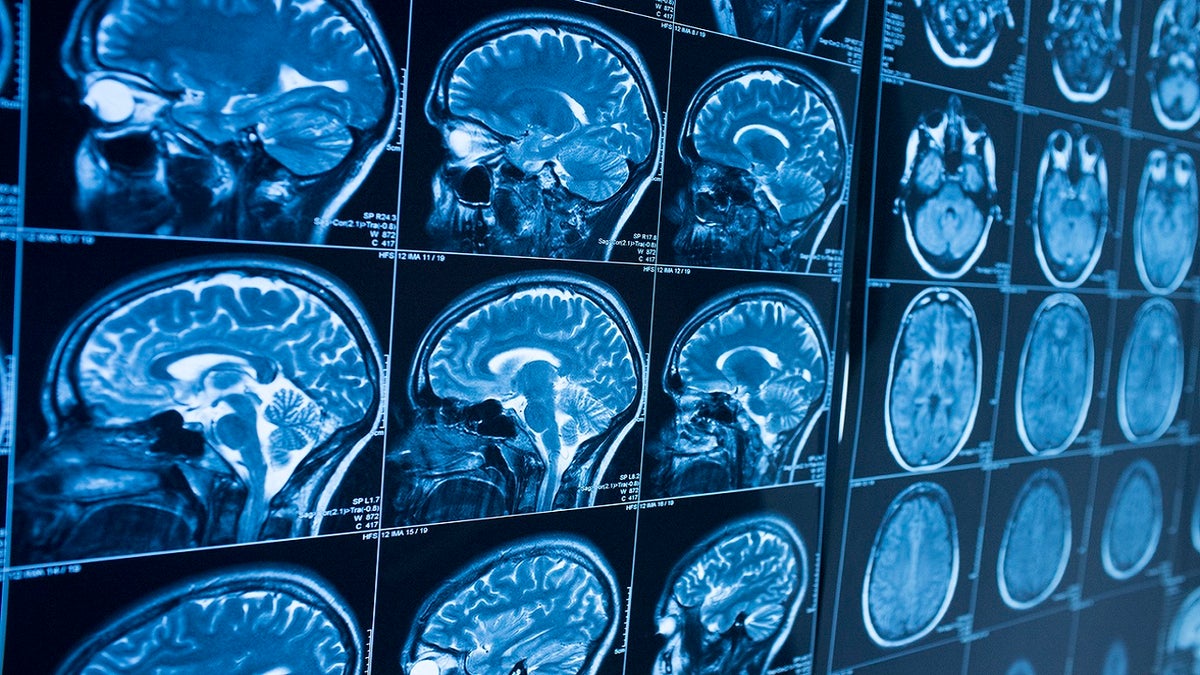In addition to heavily increased rates of anxiety and depression, researchers at Stanford University discovered the COVID-19 pandemic aged teenagers’ brains by almost three years, according to a study published Thursday.
In “Effects of the COVID-19 Pandemic on Mental Health and Brain Maturation in Adolescents,” the group of seven researchers compared MRI scans taken of teenagers ages 15 to 18 before the pandemic to scans of the same age group taken during the pandemic.
The images showed teenagers’ brains looked almost three years older during the pandemic than they did before COVID.
The scans also reportedly showed structural changes in the brain and changes to the parts of the brain responsible for memory, concentration, learning, emotion, reactivity and judgment.
HEART DISEASE, STROKE DEATHS ROSE DURING COVID-19 PANDEMIC: STUDY
“Even though they were age-matched, their brains looked older,” said lead author Ian Gotlib, professor of psychology at Stanford University, according to USA Today. “It confirms the stress that they experienced during the pandemic and the effects that they have had, not only on their mental health but on their brain, as well.”
Researchers also discovered adolescents had larger hippocampal and amygdala volume after the pandemic, which control access to memories and help modulate emotions. Reduced thickness of cortex tissue was also reported.
Experts in the study said it is still unclear how the changes will impact teens and their future, but for the time being, it serves as evidence that mental health disorders in teens grew during the pandemic.
HIGH-POVERTY SCHOOL DISTRICTS SUFFERED MORE LEARNING LOSS DURING COVID PANDEMIC, ACCORDING TO STUDY
Prior to this study, the researchers said accelerated changes in “brain age” had only been found in children who experienced chronic adversity like violence, neglect, family dysfunction or a combination.
Dr. R. Meredith Elkins, program co-director of the McLean Anxiety Mastery Program at McLean Hospital, told USA Today the results of this study are not surprising to those in the clinical world.
“Since March 2020, our clinic has seen an objective increase in the severity of anxiety disorder, OCD, co-occurring depression and risk-related behaviors associated with distress,” she said.
Elkins also said pediatric screening at her clinic shows around 60% of children have a recent history of self-injury or suicidal ideation.
She added that children reported one of the biggest sources of pandemic stress was the “lack of social support and isolation during the lockdowns.” Many children also experienced heightened anxiety over health risks and academic stress from the sudden return to school.
“You had this period of relative ease academically and then all of a sudden kids are back to school and the demands are ramped up,” she told USA Today. “They have real concerns that they’ve fallen behind and can’t catch up.”
US MATH, READING TEST SCORES PLUNGE FOR STUDENTS ACROSS COUNTRY FOLLOWING COVID-19 PANDEMIC
Gotlib said his team of researchers plans to continue studying the same teens through young adulthood to see if their brains keep aging ahead of schedule or if they sync back up.
He also reportedly plans to study the brain structure of kids who contracted COVID-19 to see if they experienced any additional changes.
Until then, Elkins said the study proved the need for more resources toward the growing mental health crisis in today’s youth.
“We need more sustainable federal and public investment to increase mental health care access for youth,” she said. “Believe our kids that these issues require action.”
Article Source: Health From Fox News Read More




